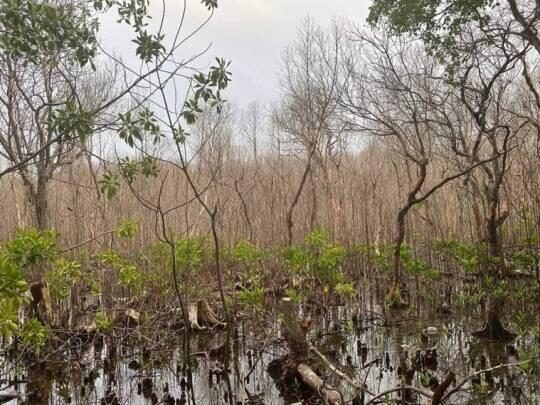Mystery of Maldives’ dying mangroves and India’s role in quest to save them

By Trend
Some three years ago, during one of his daily visits into the mangroves of Neykurendhoo island in northern Maldives, 45-year-old Ibrahim Marif began noticing something strange — the mangroves were dying. Concerned about the degradation happening in front of him, Marif rushed to tell the island’s council members, a local government body that oversees everyday affairs, Trend reports citing The Indian Express.
By February 2020, just before the onset of the Covid-19 pandemic, the health of the mangroves had deteriorated to such a degree that the country’s Environmental Protection Agency (EPA) began to take notice and sent its scientists to the islands to conduct field surveys and laboratory analyses. Simultaneously, photographs of the dying mangroves in 11 islands in northern Maldives began flooding social media, showing large patches of grey in between the lush green mangrove forests that had been struggling to survive. The sentimental value attached by the Maldivian people to the mangroves meant that the government had to act quickly to find the cause.
That was when the Maldives asked the Indian High Commission for assistance in connecting with Bijoy Nandan, professor at Kerala’s Cochin University of Science & Technology (CUSAT), who is particularly known for his research on Indian mangroves. What the Maldives has been witnessing is not unusual, Prof. Nandan told indianexpress.com, although it is a new phenomenon for the country. Similar cases of mangrove degradation have been recorded in several other parts of the world, for instance, in Australia, Vietnam and India, where mangroves can be found.
In the middle of the pandemic, with travel routes closed to the Maldives, Prof. Nandan’s team was tasked with investigating the preliminary causes of the phenomenon. The Maldives Ministry of Environment and the EPA stepped in to assist by collecting plant, water and soil samples from the impacted islands and sending them to CUSAT so that scientists could investigate the potential environmental as well as pathological aspects of the mangrove die-off. “The preliminary investigation of the water, soil and plant samples received by CUSAT revealed that a certain level of infectivity exists, which needed further examination,” Prof. Nandan said.
The mangroves of Neykurendhoo that had become completely dry.
Photo credit: Dr. S Sreelekshmi
In December 2021, a four-member team led by Prof. Nandan set off to
investigate what plagued the mangroves of northern Maldives,
located some 280 km from the capital Malé. “I’ve done research on
mangroves since 2011 and I had never seen a situation like this. It
was really unusual,” said Dr. S Sreelekshmi, post-doctoral fellow
and mangrove researcher at CUSAT. “The mangroves had completely
dried up — from the root to the tip. There was no foliage; only
dried sticks and stems.”
--
Follow us on Twitter @AzerNewsAz
Here we are to serve you with news right now. It does not cost much, but worth your attention.
Choose to support open, independent, quality journalism and subscribe on a monthly basis.
By subscribing to our online newspaper, you can have full digital access to all news, analysis, and much more.
You can also follow AzerNEWS on Twitter @AzerNewsAz or Facebook @AzerNewsNewspaper
Thank you!
